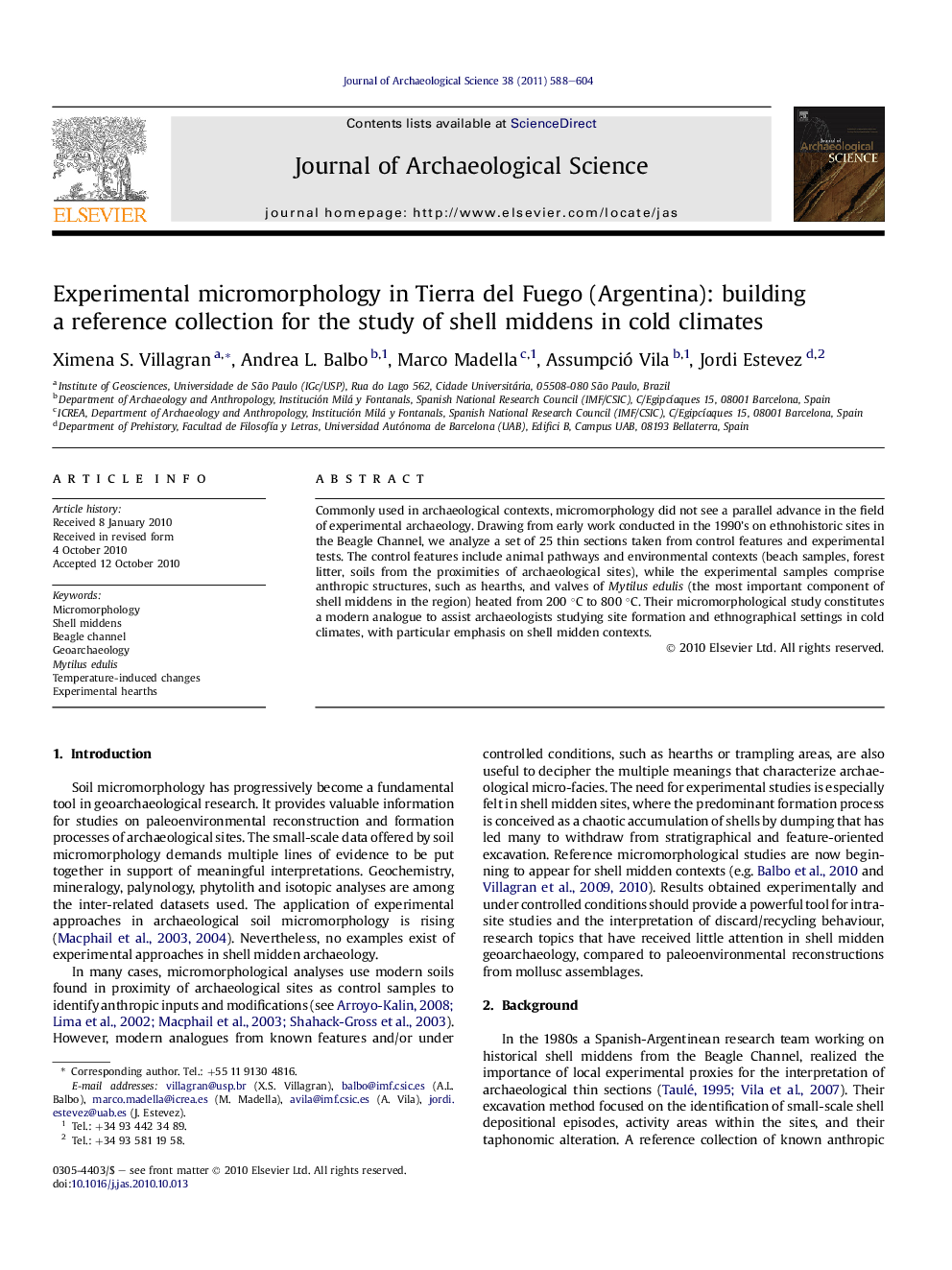| Article ID | Journal | Published Year | Pages | File Type |
|---|---|---|---|---|
| 1036122 | Journal of Archaeological Science | 2011 | 17 Pages |
Commonly used in archaeological contexts, micromorphology did not see a parallel advance in the field of experimental archaeology. Drawing from early work conducted in the 1990’s on ethnohistoric sites in the Beagle Channel, we analyze a set of 25 thin sections taken from control features and experimental tests. The control features include animal pathways and environmental contexts (beach samples, forest litter, soils from the proximities of archaeological sites), while the experimental samples comprise anthropic structures, such as hearths, and valves of Mytilus edulis (the most important component of shell middens in the region) heated from 200 °C to 800 °C. Their micromorphological study constitutes a modern analogue to assist archaeologists studying site formation and ethnographical settings in cold climates, with particular emphasis on shell midden contexts.
Research highlights► High biological action in soils and sediments from the Beagle Channel coasts. ► Sea-mammal bones from the beach are calcitic with wide dissolution areas. ► Sea-mammas from beached individuals are not deeply dissolved and bioeroded. ► Burning traits of Mytilus edulis correspond to stages of bio-aragonite transformation with heat. ► Burning traits allow interpreting hearth temperature and re-arrangement of archaeological combustion structures.
